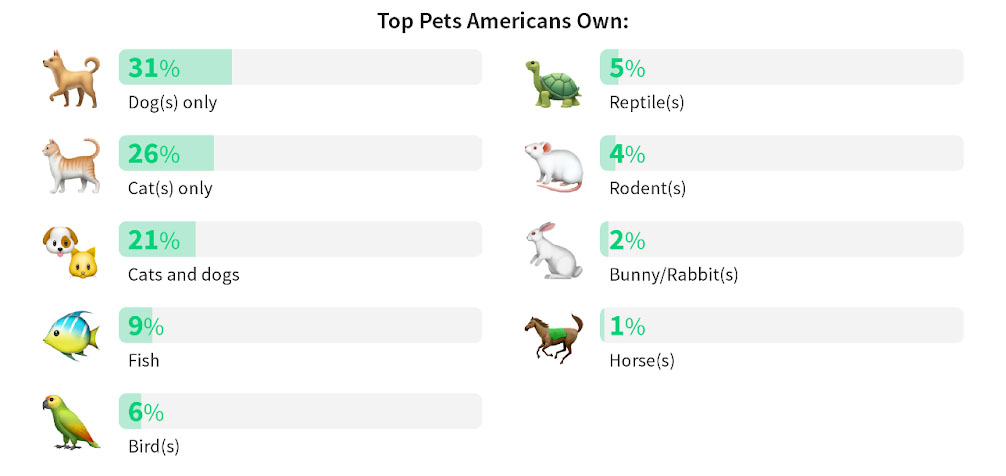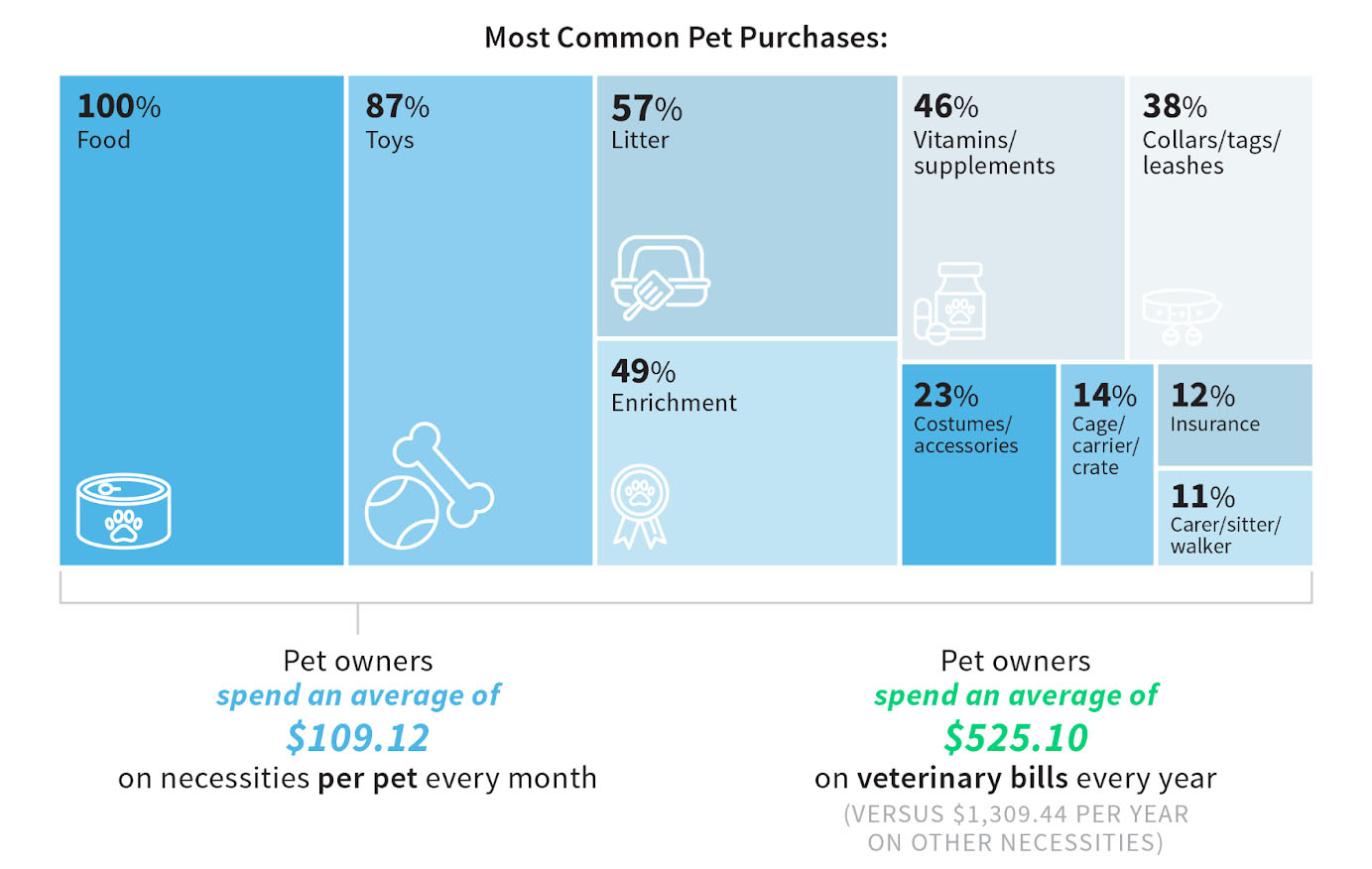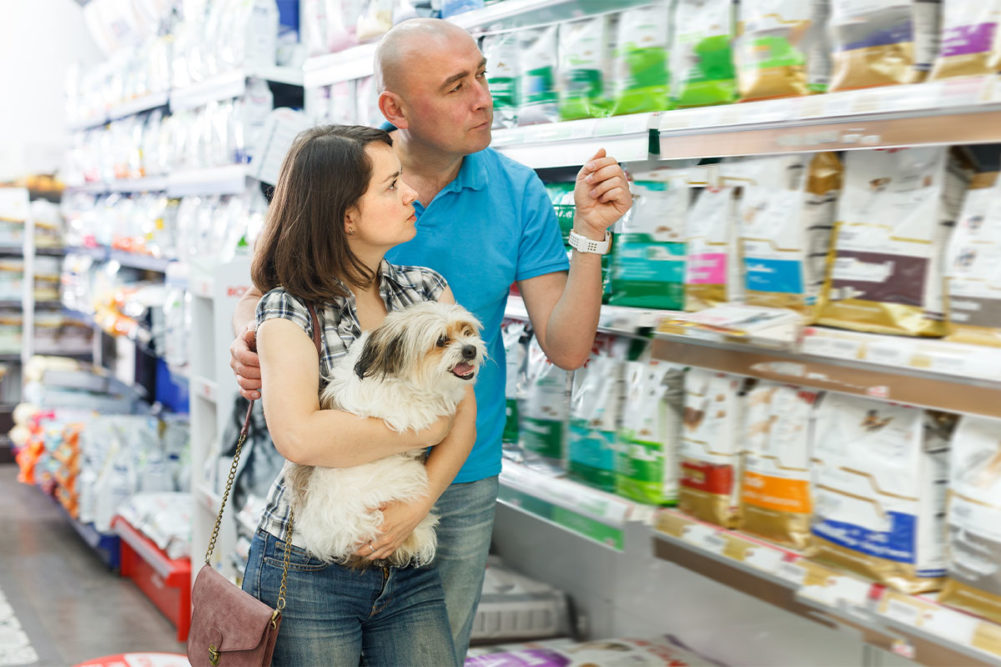TEL AVIV, ISRAEL — Insuranks, an online insurance comparison marketplace, released its latest study on US pet purchasing behaviors. According to the company, pet parents within the United States feel that they’ve spent more money on their pets in 2022, in what Insuranks described as “petflation.”
Pet ownership has significantly increased in the United States. According to the American Pet Products Association’s (APPA) 2021-2022 National Pet Owners Survey, at least 70% of US households own a pet, representing about 90.5 million homes. Millennials remain the largest cohort of US pet owners followed by Baby Boomers and Gen X pet owners.
According to Insuranks, the top owned pets in the United States are dogs, with 31% of Americans owning just dogs, followed by cats, with 26% owning just cats. The study also claims that 21% of Americans own a combination of both cats and dogs.
 Source: Insuranks.com
Source: Insuranks.com
Among the 35% of US households that own a pet, 29% own two pets, 15% own three, 7% own four, and 14% own five or more than five pets, according to Insuranks. The study revealed that about 28% of Americans acquired at least one pet during the peak of the pandemic, from March to December 2020.
For Americans, the top five reasons for getting a pet include companionship, always wanting one, mental health benefits, fun and lifestyle changes, according to Insuranks.
This boom in pet ownership drove the pet industry to achieve its highest level of sales, according to APPA’s 2021 State of the Industry report, reaching $123.6 billion in 2021. Pet food and treat products remain top dog in the space, amassing $50 billion in sales in 2021, a 13.6% increase from 2020.
According to Insuranks, US pet owners spend an average of $109.12 monthly on pet necessities. The most common pet purchases include food, of which all US pet parents purchase; toys (87% of pet owners), litter (57%), enrichment products (49%), vitamins and supplements (46%), and other pet products.
 Source: Insuranks
Source: Insuranks
In addition to necessity purchases for their pets, US pet owners also spend an average of $525.10 on veterinary bills annually, according to Insuranks. According to the company, the top expenses for US pet owners are veterinary bills (51%), food (36%), initial adoption costs (5%), medications (3%) and grooming (2%).
According to Insuranks, the high costs of veterinary bills and medications may increase the popularity of pet insurance offerings. Seventeen percent of US pet owners currently have pet insurance, of which 45% claim it has helped cover an unaffordable procedure or medication, according to the data. Only 9% of US pet parents have pet insurance through their employers and 84% reported they think the service is worth it. According to Insuranks, 40% of pet parents that do not have pet insurance wish they did, and 22% plan to get it in the future.
With pet insurance services growing in interest for US pet owners, some pet food companies have partnered with pet insurance providers to cash in and further diversify their commitment to pet health and wellness. Purina Petcare recently partnered with Spot Pet Insurance, Burns Pet Nutrition partnered with Admiral to launch a specialized pet insurance service, and new cat nutrition startup KatKin revealed plans to expand into the pet insurance space.
As the need for pet insurance continue to grow in the United States, it may become more common to see pet food companies enter the insurance space.
According to Insuranks, nearly half (49%) of US pet parents feel they’ve spent more on their pets in 2022 compared to previous years. Prices for pet food products continue to rise due to continued supply chain challenges, labor issues and more, causing low supply amidst ever-increasing demand.
Despite increasing costs, pet parents remain committed to their purchasing habits. According to APPA’s latest “Pulse Study: Pet Ownership In The Current Economy,” the majority of pet food shoppers (66%) claimed their pet purchasing habits will remain the same, even if the economy worsens. This sentiment speaks on the shifting nature of pet food spending, with more pet owners considering these purchases a necessity.
US pet parents are going far to meet their pets’ nutritional needs, health and wellbeing, furthering the humanization of pets. Many pet parents’ habits are also furthering the humanization of pets. According to Insuranks, the most popular habits include purchasing Christmas gifts for pets, sharing foods and beverages with pets, celebrating a pet’s birthday, and purchasing premium food and supplements, among many other habits.
As pet ownership continues to rise and an increasing number of Gen Zers become pet parents, the trend toward humanization is expected to continue with pet owners seeking products that mirror those they eat themselves. With this, pet parents may become increasingly willing to spend more on their pets, opening opportunities for the pet food and treat industry to expand its current boundaries in premiumization.
Read more on Insuranks' pet industry report.
Keep up with the latest pet food trends on our Trends page.




